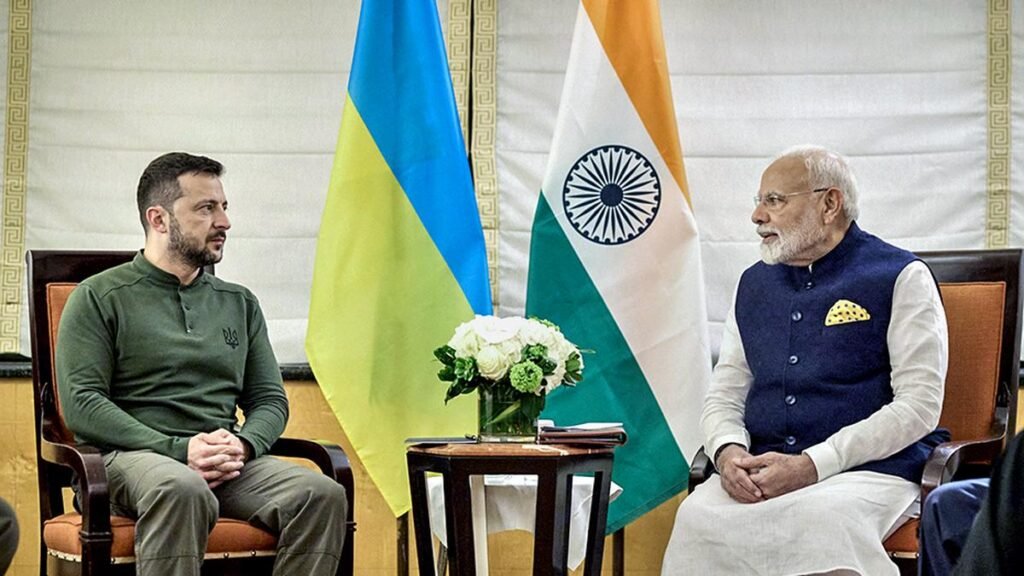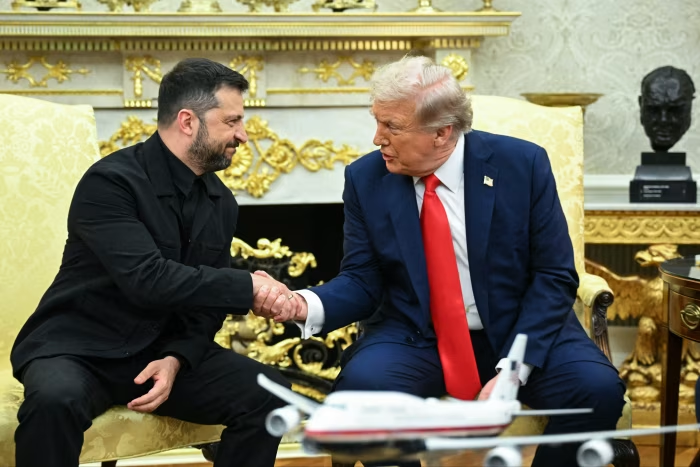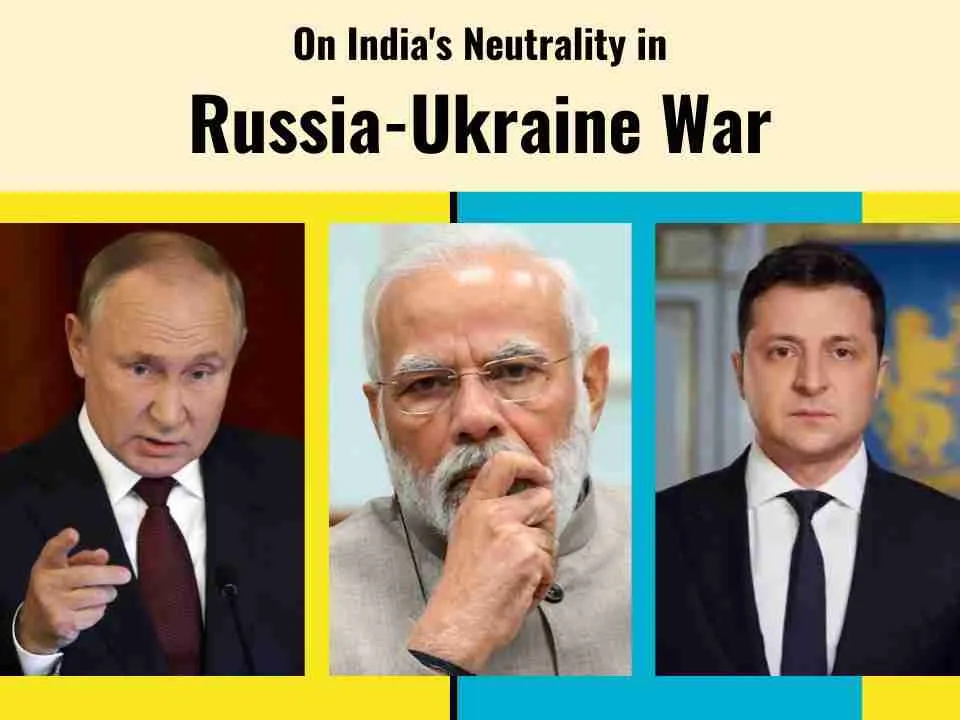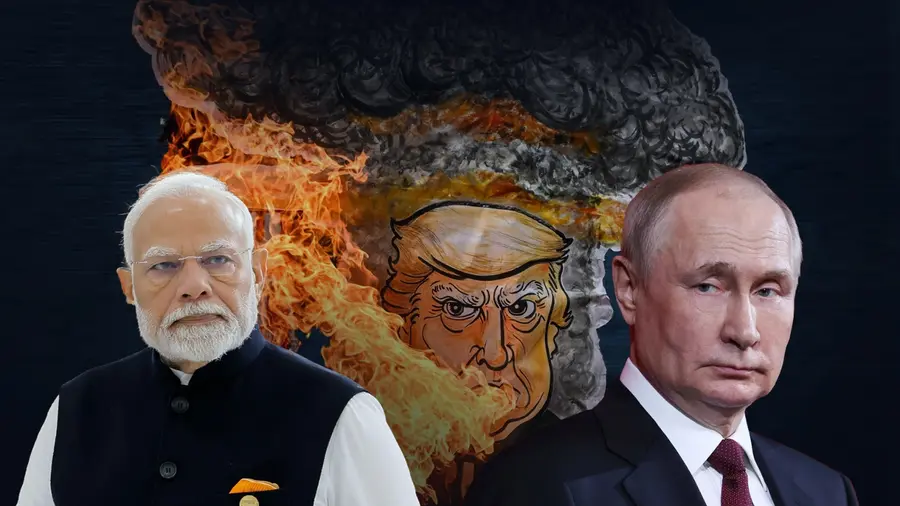By Adityan, Editor, Soch Se
In the high-stakes theatre of global diplomacy, words are weapons. This week, two of the world’s most prominent leaders aimed their words directly at New Delhi, and their messages could not have been more different. First, from the podium of the UN General Assembly, President Donald Trump delivered a hammer blow, accusing India and China of being the “primary funders of Moscow’s war” through their continued purchases of Russian oil. Days later, Ukrainian President Volodymyr Zelenskyy offered a much softer, more strategic handshake, stating, “India is mostly with us… we just need to resolve the energy question.”

So, what is the truth? Is India a war funder or a quiet ally? From my perspective as the editor of Soch Se, the answer is far more complex. This isn’t just about geopolitics; it’s about how India is being pulled in two opposite directions, forced to perform a precarious balancing act on the world stage. On one side, the U.S. and Ukraine are pushing for a firm alignment with Kyiv. On the other, India is fiercely protective of its energy security and its long-standing policy of strategic autonomy.
This brings us to the real story behind the headlines. India is no longer a passive bystander in this conflict; it has become the pivot point in the Russia-Ukraine war narrative. As we analyze the India Ukraine Russia war stance, it becomes clear that, as one of Trump’s aides famously said, the road to peace may just “run through New Delhi.”
The Unavoidable Truth: India’s Energy Realities
Before we can judge India’s position, we must first understand its compulsions. When the West imposed sweeping sanctions on Russia following the 2022 invasion, a new economic reality emerged. Russia, in need of new markets for its oil, began offering it at a significant discount. For a nation like India, this was an offer it could not refuse.
My research into India’s energy realities is clear: the surge in discounted oil imports from Russia post-2022 was not a political statement, but an economic necessity. For a developing country of 1.4 billion people, energy security is paramount. Affordable crude oil is directly linked to controlling inflation, keeping fuel prices at the pump manageable, and ensuring the stability of our entire economy. To simply cut off this vital supply is not a question of morality alone; it would have severe and immediate consequences for the average Indian household. This is the crucial context that is often lost in Western media narratives.
A Tale of Two Messages: Trump’s Hammer vs. Zelenskyy’s Handshake

The conflicting messages from Trump and Zelenskyy are not accidental; they are a calculated diplomatic strategy. They reveal that India has become too important to the global equation to be completely alienated.
- Trump’s Hammer: Donald Trump’s accusation that India is a “primary funder of Moscow’s war” is a classic pressure tactic. It is designed to publicly shame New Delhi and force a change in its policy by aligning it with a narrative of moral culpability. It’s a direct, confrontational approach.
- Zelenskyy’s Handshake: In stark contrast, President Zelenskyy’s statement—“India is mostly with us… we have these questions with energy”—is a masterclass in diplomacy. He acknowledges the complex energy issue but frames India as a friend who is fundamentally on the right side. He softens the criticism, leaving the door open for negotiation and partnership.
From my perspective, this divergence shows that India is too important to lose. Even Ukraine, in its desperate fight for survival, understands that it cannot afford to push New Delhi completely into Moscow’s corner. Zelenskyy’s goal is to gently persuade India to “change their attitude toward Russian energy,” not to antagonize it.
New Delhi’s Defensive Shield: The Strategic Autonomy Stance

How has India responded to this immense pressure? For years, New Delhi has maintained a consistent and clear position. My analysis of India’s stance shows it is built on two defensive pillars:
- Legality and National Interest: India has repeatedly stated that its trade with Russia, including oil purchases, does not violate any international laws or sanctions. Furthermore, the government has consistently maintained that its primary responsibility is to secure the national interest of its citizens, and affordable energy is a core component of that.
- Flagging Western Hypocrisy: New Delhi has also been quick to point out that many Western nations themselves continue to purchase billions of dollars worth of other Russian goods, from metals to nuclear fuel. This argument serves as a powerful defensive shield, framing the criticism against India as a case of double standards.
This position of “strategic multi-alignment” is a cornerstone of Indian foreign policy. It allows India to maintain crucial relationships with both the Western bloc and long-standing partners like Russia. But as the war drags on, this policy is being tested like never before. To understand our commitment to balanced reporting, you can review our editorial policy.
The Great Power Shift: From Bystander to Dealmaker
Perhaps the most significant long-term consequence of this diplomatic tug-of-war is the evolution of India’s role on the world stage. From my analysis of the global diplomacy shift, both Zelenskyy and Trump’s statements, though different in tone, signal that India’s role is now seen as central to any potential peace talks.

This recognition is new. In the initial phase of the war, India was largely seen as a “neutral” or “non-aligned” bystander. Now, it is increasingly being viewed as a potential dealmaker or dealbreaker. The statement from Trump’s aide, Peter Navarro, that “the road to peace runs through New Delhi,” is a powerful acknowledgment of this new reality. India’s economic heft, its diplomatic ties with both sides, and its leadership of the Global South have placed it in a unique position.
If you have questions about this analysis, please feel free to contact us.
Conclusion:
So, where does this leave the India Ukraine Russia war stance? It leaves India on a diplomatic tightrope, performing one of the most difficult balancing acts in its modern history.
My final opinion is this: India’s long-standing policy of “strategic multi-alignment” is being tested in the crucible of this conflict. The pressure from the West is immense. If India leans too far and caves to the pressure to cut off Russian oil, it risks its own economic stability and alienates a long-term, crucial defense partner in Russia. If it leans too heavily on its relationship with Russia, it risks losing Western goodwill, investment, and access to critical technology.
India is walking a fine line, attempting to be a friend to all and an ally to none but itself. The conflicting statements from Trump and Zelenskyy are not a sign of confusion; they are a sign of India’s rising influence. The world now understands that it cannot afford to ignore New Delhi. The challenge for Indian diplomacy will be to leverage this newfound centrality not just to protect its own interests, but to genuinely contribute to a pathway for peace.
We must, of course, provide a disclaimer that this analysis is based on our interpretation of the events. To learn more about our mission to provide clarity on complex global issues, please visit our about us page.
Frequently Asked Questions (FAQ)
1. Is India actually violating sanctions by buying Russian oil?
No. Most of the sanctions against Russian oil have been imposed by the G7, the European Union, and their allies. India, not being a part of these blocs, is not legally bound by their sanctions. Therefore, India’s trade with Russia is not in violation of international law.
2. Why is Russia an important partner for India?
Russia has been a long-standing and reliable partner for India for decades, particularly in the defense sector. A significant portion of India’s military hardware is of Russian origin, and the two countries share deep strategic ties.
3. What does “strategic multi-alignment” mean?
Strategic multi-alignment is a foreign policy approach where a country avoids formal alliances with major power blocs. Instead, it builds issue-based coalitions and maintains good relationships with multiple, often competing, powers to maximize its own strategic autonomy and national interest. It is an evolution of India’s traditional “non-alignment” policy.